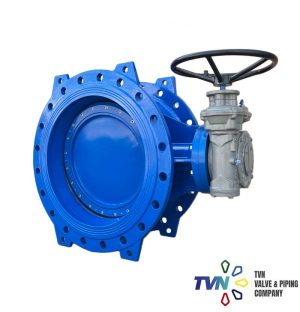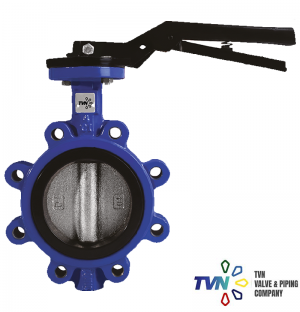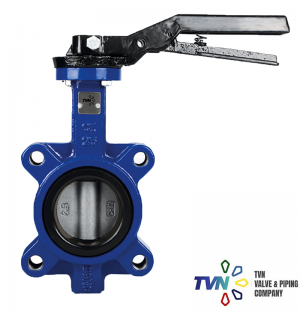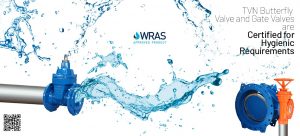Download PDF Data Sheet
TVN V102 Wafer Type Butterfly valve construction is formed with the centered disc rotating inside the valve body 90 degrees. With the actuation type, the flow of the fluid can be stopped, regulated or started. In a wafer connection, the valve is installed between the pipe flanges and tightened to its place with the bolts for the pipe flanges.
- V102 type is with SS304 Stainless Steel disc
- SS304 Disc ensures better corrosion resistance. (SS316 Disc is optional)
- GG25 Cast Iron Body (GGG40 Ductile Iron is optional)
- EPDM sealing/sleeve/gasket is by deafult. Diffrent sealing materials are available
- With its compact design saves space, light weight, easy to install and budget friendly
- You should locate the disc within the own section, with the precisely calculated disc design pressure should keep at minimum level
- Machined disc ensures lower and regular torque
- Fully coated body avoids corrosion
- Standard version is with hand lever. With the intermediary lock positions on the lever, possible to x the on desired position
- With ISO5211 top angle, direct mounting of gearbox, pneumatic or electric actuator is possible without any need for additional parts
- Bi-directional use, tight sealing in both ways
- Do not need any maintenance, easy to make spare part replacements
- Anti blow-out stem allows safety during operation
- No need for additional gaskets for installation on the pipeline
- With its long neck design, suitable for insulation application
- You can not use Wafer Type Butterfly valve as an end of line valve
- Hydrostatic test pressure for seat: PN x 1.1 , for shell: PN x 1.5 according to EN 12266-1.
ASSEMBLY INSTRUCTIONS
1- Move the two angles with enough distance from the network so that the valve slides smoothly without damaging the lips of the elastic ring. The butter fly will be in half-open position with no projection outside the valve width.
2- Centre the valve with the four screws/ties (two upper and two lower) without tightening them. Test the opening and closing of the butter y to ensure its operation. Place the butter y in perfectly centered position and open taking care not to damage its periphery. Tighten the screws/ties to x the position of the BV.
3- Tighten the nuts until there is metal-metal contact between the body of the BV and the angles of the network. Tighten the screws/ties “diagonally” and progressively. The tightening torque must be adequate to make metal-metal contact and less than the resistance capacity of the screw/tie.
Storage
When valves stores for some time, (2 months or more) before storing, storage should be in the original delivery crates or cases.
Wafer Type Butterfly Valve Storage Conditions
You should store the valves on the ground in a clean, dry indoor area. Protect the valve from temperature and humidity extremes, and exposure to excessive dust, moisture, vibration, deformations, sunlight and ozone.
Temperature: storage temperature below 25°C, above 0°C preferable below 15°C.
Humidity: storage conditions should be such that condensation does not occur, store in a dry environment. Maximal 50% relative humidity.
Light: You should protect valve rubbers from light, in particular direct sunlight or strong artificial light with high ultra violet. Ozone: storage rooms should not contain any equipment generating ozone. E.g. lamps, electric motors.
Wafer Type Butterfly Valve Installation
The valves are bi-directional and can be fitted in either direction relative to the ow. The valve will control flow equally in either direction. The recommended installation position is shaft horizontal and the lower disc edge opening downstream (especially for slurry service and media with a tendency for sedimentation). For optimum valve control and smooth performance, it should have 10 to 20 pipe diameters of straight run inlet piping and 3 to 5 pipe diameters straight outlet piping.
Do not use the valve as a crow-bar to spread the flanges, this might lead to damage to the flange area and/or damage to the O-ring sealing.





